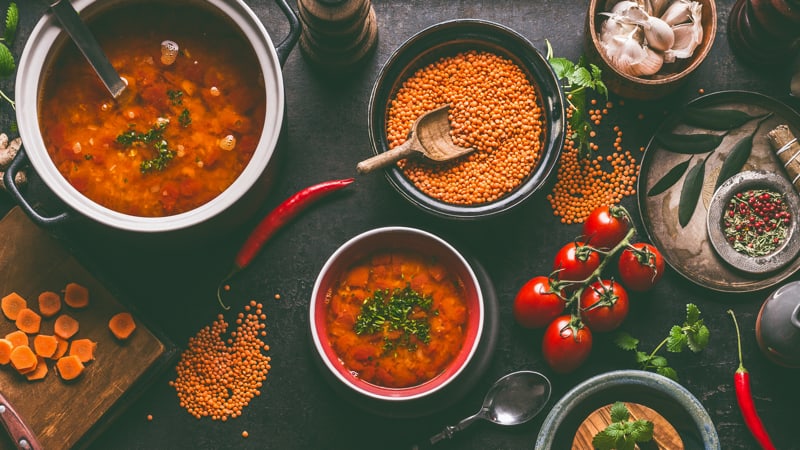Health: 5 Overlooked Sources of Protein
Getting enough protein may be even easier than you thought

Have you seen the recent headlines about canned tuna losing its popularity? This high-quality, convenient form of protein has seen sales drop by 40% in recent years, according to the U.S. Department of Agriculture. Apparently, this is largely due to millennials not buying it, because they favor fresher fare. If you also prefer to pass on canned tuna, you may be looking for alternative sources of protein foods that are quick, easy and versatile. Here are five you’re probably not eating often enough, plus simple ways to incorporate them into balanced meals.
Lentils
In addition to canned and frozen options, you can purchase steamed, ready-to-eat lentils in the produce section of many markets. A 1-cup portion provides roughly 18 grams of protein, along with 16 grams of filling fiber (over 60% of your daily target) and a plethora of vitamins, minerals and antioxidants. For a meal in minutes, toss a generous handful of leafy greens with a dressing made from balsamic vinegar, stone-ground mustard and Italian herb seasoning. Top with lentils, a quarter of an avocado and a few tablespoons of pumpkin seeds.
Pea protein burgers
While whole foods are always preferred over anything processed, burgers made from pea protein are derived from yellow split peas and can be a good source of protein. In addition to pea protein being naturally gluten-free and not a common allergen, it’s easy to find pea burgers made with whole-food ingredients. One patty can provide at least 25 grams of protein. These can be used in a number of ways, including crumbled on salads, in a stir-fry or rolled up in collard wraps with chopped veggies and vinegar-based slaw. They are also delicious whole, placed between lettuce leaves, along with tomato, onion and avocado, served with air-fryer or oven fries.
Hard-boiled eggs
While hard-boiled eggs are super easy to make, you can also purchase them precooked. Each whole egg provides about 6 grams of protein. Plus, newer research shows that the cholesterol in eggs, which is entirely found in the yolk, has little if any negative impact on blood cholesterol. In fact, one study found that in healthy adults, up to three whole eggs per day increased levels of “good” HDL cholesterol and lowered “bad” LDL. The yolk also contains the bulk of an egg’s nutrients, packing choline, vitamin D, calcium, iron, zinc, vitamin B12, antioxidants and omega-3 fatty acids.
Beans
If you don’t own a can opener, look for beans sold in shelf-stable, tear-open boxes. One cup of organic vegetarian baked beans contains roughly 12 grams each of protein and fiber. For a quick meal, serve beans with steamed frozen broccoli tossed with jarred dairy-free pesto. Or pair them with a fresh garden salad dressed with an EVOO-based balsamic vinaigrette.
Greek yogurt
Both plant-based and dairy-based grass-fed Greek yogurts can be good sources of ready-to-eat protein. Depending on the brand, one individual container of a plant-based variety provides 11 to 14 grams of protein. The great thing about plain Greek yogurt is that you can enjoy it either sweet or savory. For a sweet version, add fresh fruit, nuts or seeds, a drizzle of maple syrup, a dash of cinnamon and a sprinkle of fresh-grated ginger. For a savory option, add garlic, fresh dill, red-wine vinegar, sea salt and black pepper, then toss with veggies like sliced cucumbers, tomatoes and a bit of red onion.
And for even more wellness tips, visit our health page!
Health delivers relevant information in clear, jargon-free language that puts health into context in peoples’ lives. Online at www.health.com.
©2021 Meredith Corporation. Distributed by Tribune Content Agency, LLC.

